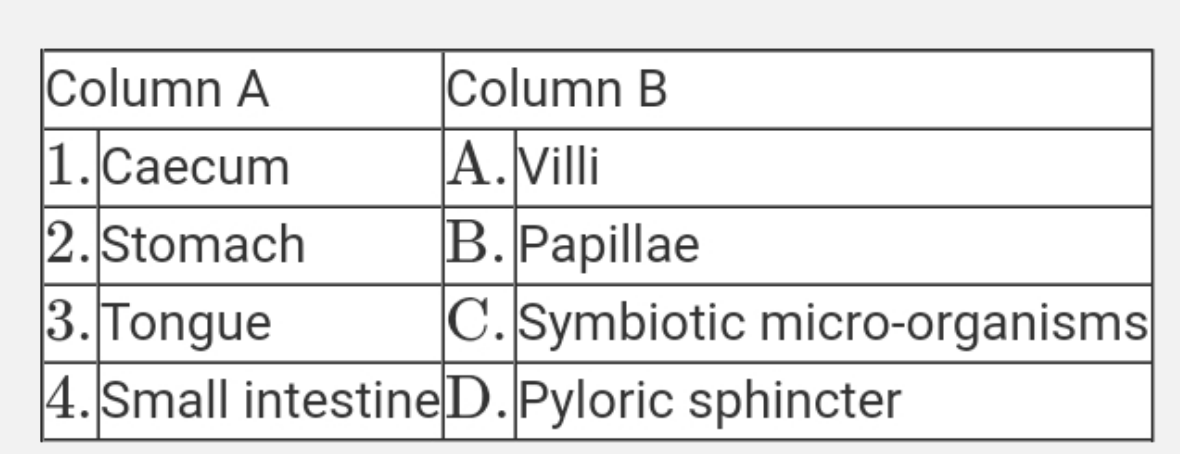Match the column :
ColumnIColumnIISelf reduction(p)Lead
ColumnIColumnIICarbon reduction(q)Silver
ColumnIColumnIIComplex formation and displacement by metal(r)Copper
ColumnIColumnIIDecomposition of iodide(s)Boron
The correct Answer is:A, B, C, D
To solve the matching question between the processes in column 1 and the corresponding metals in column 2, we can follow these steps:
Step 1: Identify the Processes
We have the following processes in column 1:
1. Self-reduction
2. Carbon reduction
3. Complex formation and displacement by metal
4. Decomposition of iodide
Step 2: Identify the Metals
In column 2, we have:
1. Lead
2. Silver
3. Copper
4. Boron
Step 3: Analyze Each Process
Self-reduction
- Definition: This process involves a metal ore reducing itself without the addition of an external reducing agent.
- Metals Involved: Lead (Pb) and Copper (Cu) are known to undergo self-reduction.
- Reactions:
- For Lead:
2PbS+3O2→2PbO+2SO2
PbO+PbS→Pb+SO2
- For Copper:
2Cu2S+3O2→2Cu2O+2SO2
Cu2O+Cu2S→6Cu+SO2
- Matching: Self-reduction matches with Lead (Pb) and Copper (Cu).
Carbon Reduction
- Definition: This process involves the reduction of metal oxides using carbon as a reducing agent.
- Metal Involved: Lead (Pb).
- Reactions:
PbO+C→Pb+CO
PbO+CO→Pb+CO2
- Matching: Carbon reduction matches with Lead (Pb).
Complex Formation and Displacement by Metal
- Definition: This involves the formation of a complex and then displacement of a metal from that complex by a more reactive metal.
- Metal Involved: Silver (Ag).
- Reactions:
Ag2S+4NaCN→2Na(Ag(CN)2)+Na2S
Na(Ag(CN)2)+Zn→Zn(CN)4+Ag
- Matching: Complex formation and displacement matches with Silver (Ag).
Decomposition of Iodide
- Definition: This process involves the thermal decomposition of boron iodide to produce boron.
- Metal Involved: Boron (B).
- Reaction:
B2I4→2B+2I2 (at high temperatures)
- Matching: Decomposition of iodide matches with Boron (B).
Final Matching
Now we can summarize the matches:
- Self-reduction → Lead (Pb) and Copper (Cu)
- Carbon reduction → Lead (Pb)
- Complex formation and displacement by metal → Silver (Ag)
- Decomposition of iodide → Boron (B)
Conclusion
The final matches are:
- Self-reduction: Lead (Pb) and Copper (Cu)
- Carbon reduction: Lead (Pb)
- Complex formation and displacement by metal: Silver (Ag)
- Decomposition of iodide: Boron (B)
We have the following processes in column 1:
1. Self-reduction
2. Carbon reduction
3. Complex formation and displacement by metal
4. Decomposition of iodide
In column 2, we have:
1. Lead
2. Silver
3. Copper
4. Boron
- Definition: This process involves a metal ore reducing itself without the addition of an external reducing agent.
- Metals Involved: Lead (Pb) and Copper (Cu) are known to undergo self-reduction.
- Reactions:
- For Lead:
2PbS+3O2→2PbO+2SO2
PbO+PbS→Pb+SO2
- For Copper:
2Cu2S+3O2→2Cu2O+2SO2
Cu2O+Cu2S→6Cu+SO2
- Matching: Self-reduction matches with Lead (Pb) and Copper (Cu).
- Definition: This process involves the reduction of metal oxides using carbon as a reducing agent.
- Metal Involved: Lead (Pb).
- Reactions:
PbO+C→Pb+CO
PbO+CO→Pb+CO2
- Matching: Carbon reduction matches with Lead (Pb).
- Definition: This involves the formation of a complex and then displacement of a metal from that complex by a more reactive metal.
- Metal Involved: Silver (Ag).
- Reactions:
Ag2S+4NaCN→2Na(Ag(CN)2)+Na2S
Na(Ag(CN)2)+Zn→Zn(CN)4+Ag
- Matching: Complex formation and displacement matches with Silver (Ag).
- Definition: This process involves the thermal decomposition of boron iodide to produce boron.
- Metal Involved: Boron (B).
- Reaction:
B2I4→2B+2I2 (at high temperatures)
- Matching: Decomposition of iodide matches with Boron (B).
Now we can summarize the matches:
- Self-reduction → Lead (Pb) and Copper (Cu)
- Carbon reduction → Lead (Pb)
- Complex formation and displacement by metal → Silver (Ag)
- Decomposition of iodide → Boron (B)
The final matches are:
- Self-reduction: Lead (Pb) and Copper (Cu)
- Carbon reduction: Lead (Pb)
- Complex formation and displacement by metal: Silver (Ag)
- Decomposition of iodide: Boron (B)

